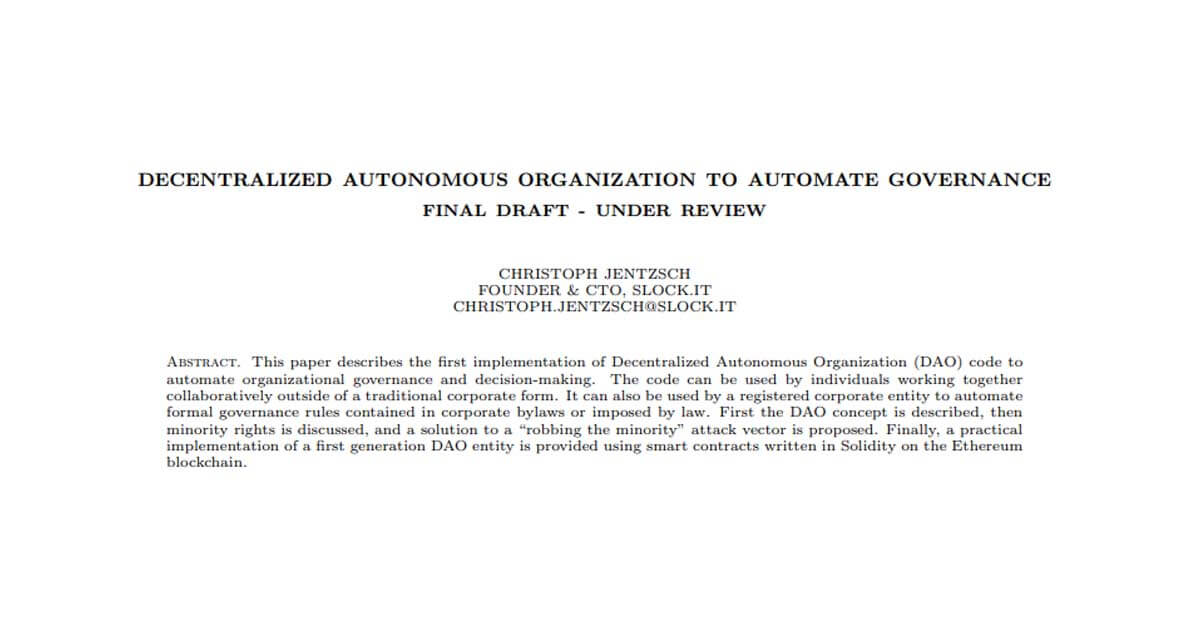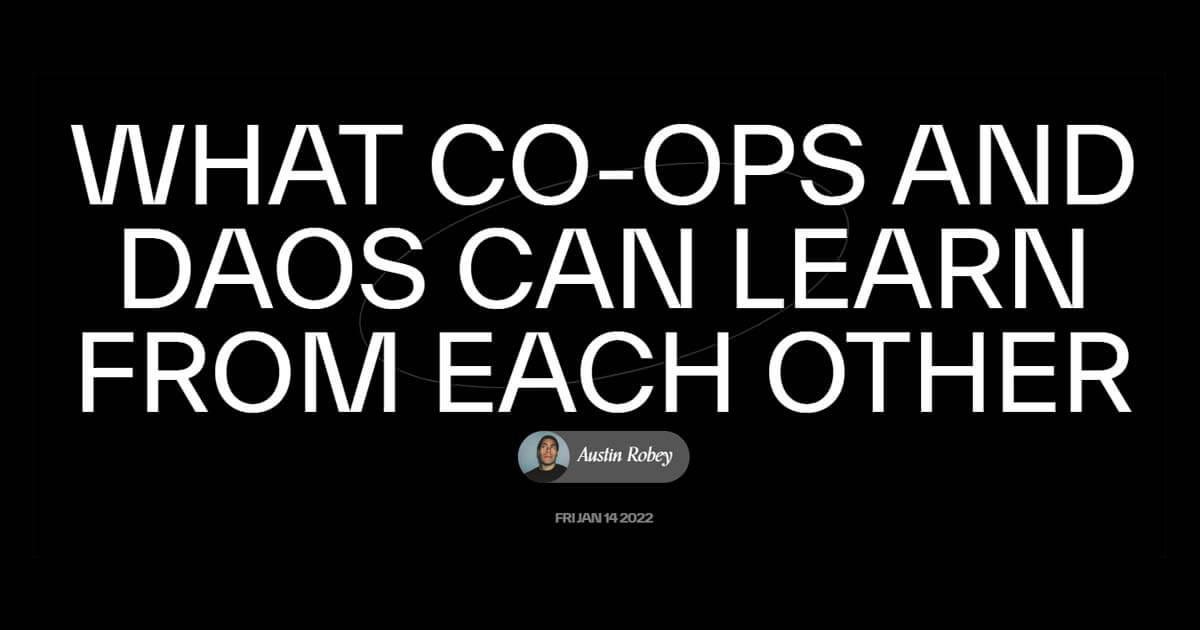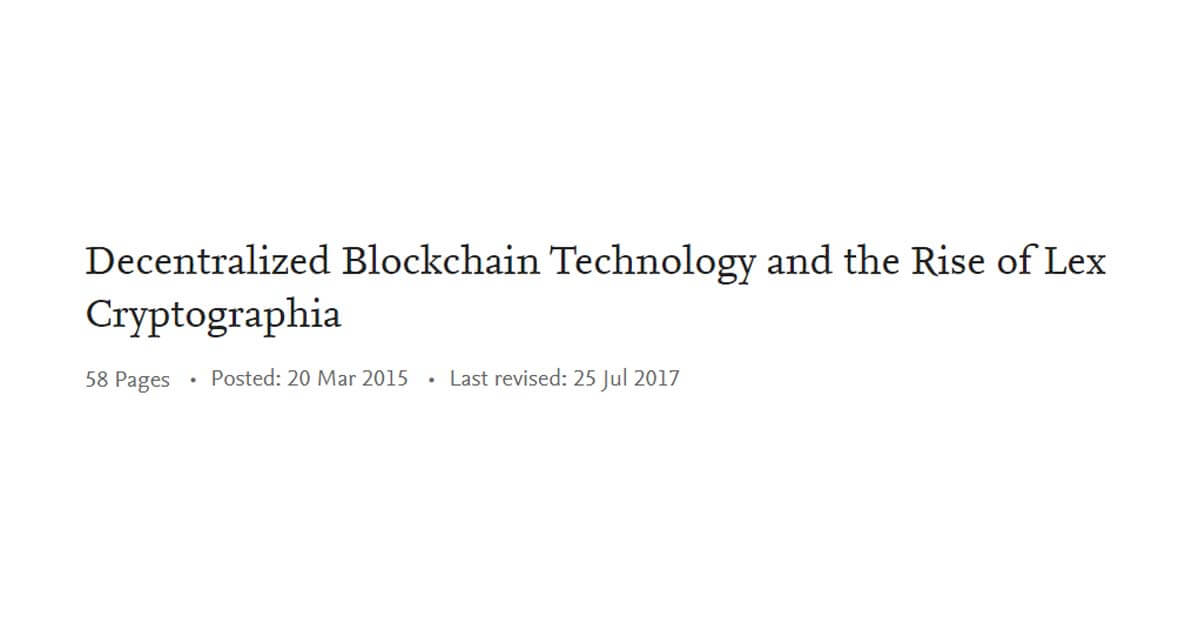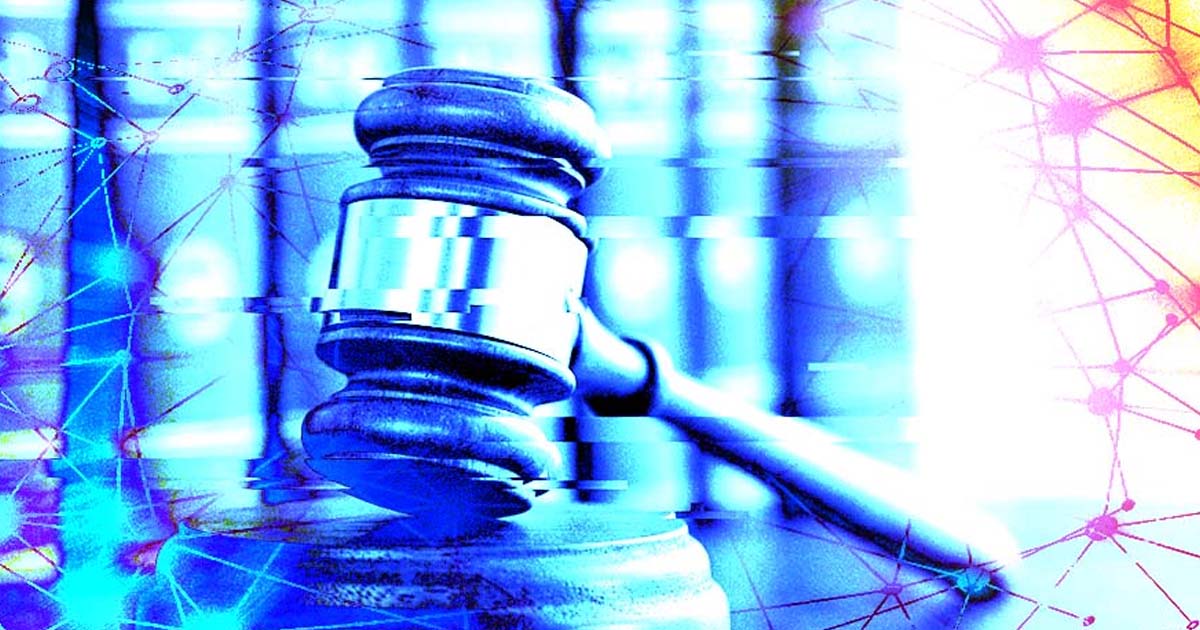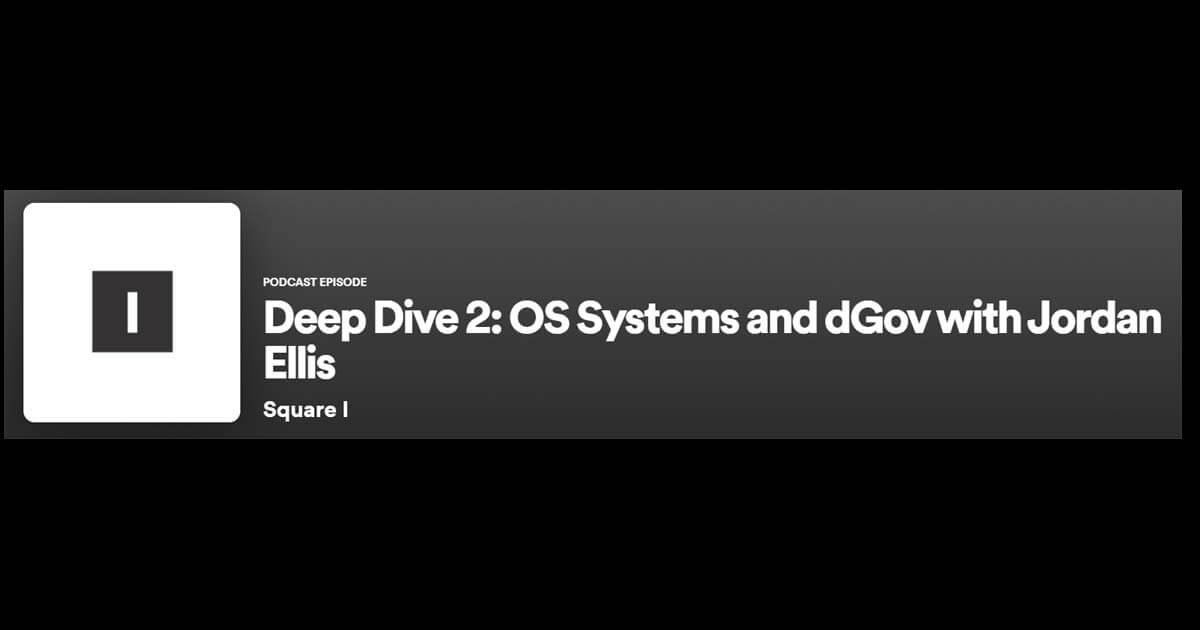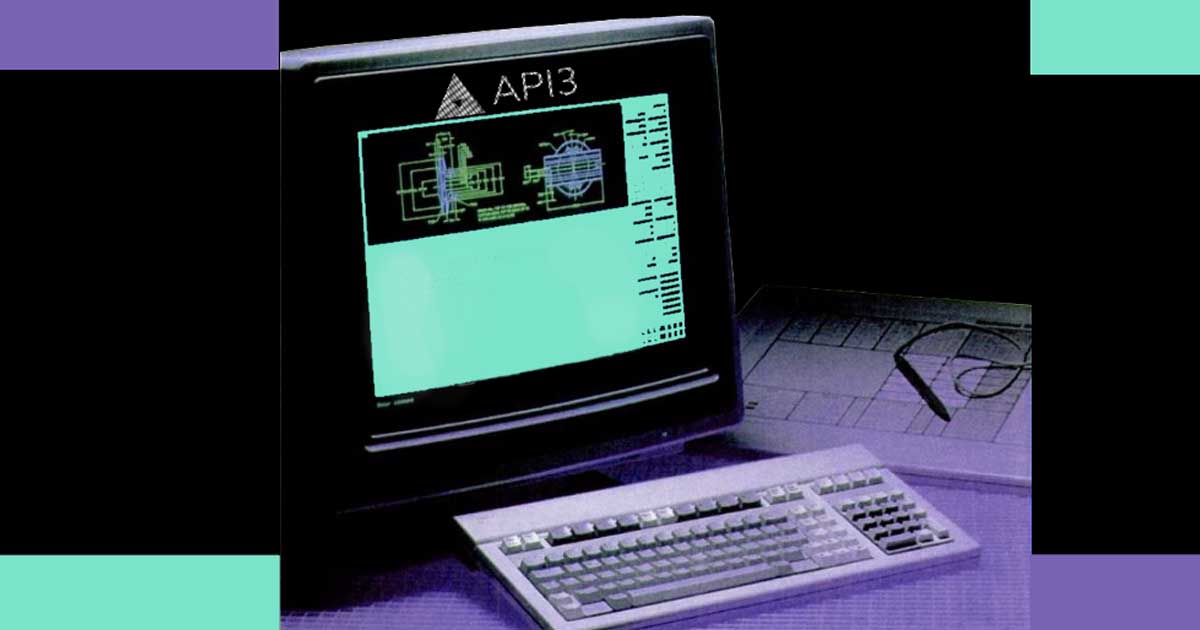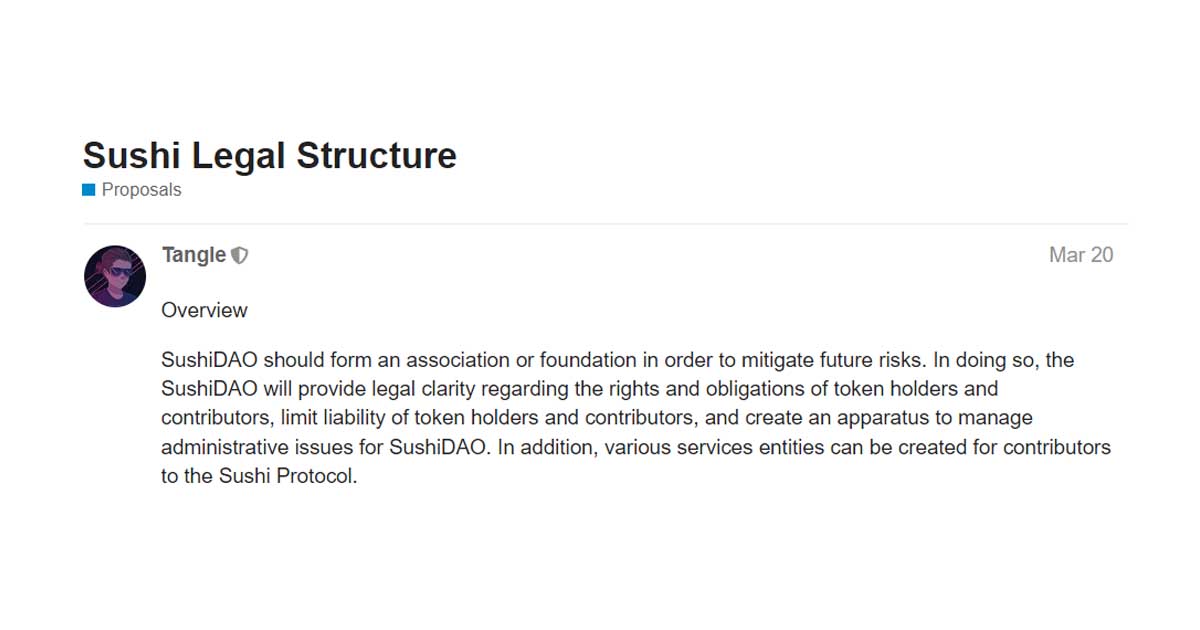Legal Entity
Introduction
The United States regulatory environment surrounding digital assets presents an extraordinary challenge for blockchain and smart contract-based protocols. In the absence of comprehensive legislation addressing the complexities of this developing technology, individual regulatory agencies have been forced to provide their interpretations of how regulations should be applied to situations and technologies, well beyond what was considered when the current laws and regulations were enacted. Although it is universally agreed that comprehensive reform and new legislation is a necessity, the reality exists that the developers and users of blockchain technology have been left to navigate a patchwork regulatory environment insufficient to address relatively simple issues related to digital assets, let alone the additional complexity accompanying the decentralized alternatives to traditional financial service offerings available through smart contract-based protocols.
The vast majority of blockchain networks and smart contract-based protocols are organized as, or intend to implement, DAOs, which are member controlled organizational structures that operate absent a centralized authority. While blockchain networks utilize a number of different consensus mechanisms, DAOs of smart contract-based protocols are typically facilitated by a set of governance-related smart contracts that have specified control rights with respect to the smart contracts making up the underlying protocol, all of which are built on distributed ledger technology, most commonly the Ethereum blockchain. These governance smart contracts disintermediate transactions between counterparties by automating the decision-making and administrative processes typically performed by traditional management structures. Decentralization of a given protocol occurs when control (e.g., governance) of the non-immutable aspects of a protocol’s smart contracts is passed from the developers to the members of a DAO via the activation of governance smart contracts.
Until such a time that comprehensive legislation and regulatory guidance exists specific to DAOs, many of the issues arising from DAO entity structural decisions cannot be definitively resolved. Although the smart contracts and functionality giving rise to the DAO exist solely on the internet and an argument can be made that their operations would be excluded from U.S. tax obligation, significant ties to the U.S. and the dominion and control over DAO treasuries establish a need for U.S. tax obligations to be met. Absent the adoption of a U.S. entity structure or a legal offshore structure, the developers and members of a DAO are at risk of potentially being (i) restricted from engaging in operations, (ii) held liable for any harm resulting from DAO activities and (iii) held liable for income tax liabilities associated with a protocol’s operation and issuances of a treasury’s governance tokens.
1. The following piece on DAO entity structuring was excerpted from David Kerr’s (Principal at Cowrie, LLC and Head of Research at the DAO Research Collective) and Miles Jennings’ (Head of Decentralization & General Counsel at a16z crypto) series on DAO Legal Frameworks published by a16z. `
The analysis contained in this article should not be construed as legal, business, tax or investment advice for any particular facts or circumstances and is not meant to replace competent counsel. None of the opinions or positions provided hereby are intended to be treated as legal advice or to create an attorney-client relationship. This analysis might not reflect all current updates to applicable laws or interpretive guidance and the authors disclaim any obligation to update this paper. It is strongly advised for you to contact a reputable attorney in your jurisdiction for any questions or concerns
Entityless | |
Overview | The Entityless structure is the default structure when any DevCorp or group of persons launches a token and decentralized governance (including via a multisig wallet). |
Best Suited For | Layer 1 blockchain networks without token-based governance and pure cryptocurrencies with no associated network or protocol. Also, network and protocol DAOs that do not produce revenue and have demonstrable technical decentralization, legal decentralization, and autonomy through the execution of immutable code. |
Primary Advantages | The Entityless structure has no formality, affords DAOs a high degree of decentralization and maximum autonomy, with no governmental interaction or ownership. Additional benefits of the structure include that it permits membership to be denoted by token ownership, thereby enabling efficient transferability, and does not require members to disclose their identity. Finally, the structure permits the generation of profits and, subject to applicable securities laws, distribution of such profits. |
Primary Disadvantages | The Entityless structure leaves DAOs unable to establish legal existence, unable to pay taxes and with a lack of clarity regarding limitations on liability. The lack of legal existence means that Entityless DAOs have no vehicle to (i) hold interest in IP, hold real property or contract without a member taking on individual responsibility; (ii) sue to enforce a right; or (iii) provide a structure conducive to expanding any real-world operational interactions. The inability to pay tax leaves members significantly exposed to any relevant jurisdiction asserting claims of taxation for its activities and the potential for unlimited liability, at the very least, exposes members to nuisance claims trying to assert liability. The foregoing limitations can hinder decentralization for network or protocol DAOs launched by DevCorps, as they can result in commingling of DevCorp and DAO activities post DAO-launch, which could be construed by authorities to undermine a DAO’s overall decentralization. Finally, while the Entityless structure is perceived to offer significant government censorship resistance, it is not a viable solution for the long-term development of web3 and is susceptible to vectors of attack from regulators all around the world. |
Additional Information | LFDAOs: Part I |
Foreign Foundation | |||
Overview | The Foreign Foundation entity structure is the most common structure currently in use by network and protocol DAOs (most commonly structured as a Cayman Islands HoldCo, with the inclusion of a B.V.I. OpCo – depending on activity and VASP reporting requirements). These structures were first utilized as non-profit vehicles to oversee the future development of blockchain networks (e.g., the Ethereum Foundation), but are now more commonly used to provide an “ownerless” legal entity structure for DAOs in which the fiduciary obligation of the entity is to the purpose specified in the formation documents rather than to shareholders. | ||
Best Suited For | Network and protocol DAOs, including subDAOs thereof. Also, non-investment and non-LCA DAOs, including social DAOs and collector DAOs. | ||
Primary Advantages | The Foreign Foundation solves the three biggest challenges facing Entityless DAOs: (i) lack of legal existence (inability to contract or own property); (ii) inability to pay taxes; and (iii) potential unlimited liability. The full “wrapper” use case enables the vehicle to provide all DAO members with limited liability with respect to any DAO actions, but the structure can also be narrowly tailored to wrap specific DAO activities (e.g., treasury management). In addition, the structure can provide an extremely flexible framework and, to the extent DAOs are able to navigate complexities relating to (i) international ownership and control; and (ii) risks of foreign sourced income, the structure provides DAOs with optimized taxation strategies regarding payments and reporting requirements. Additional benefits of the structure include that it does not restrict DAO membership from being denoted by token ownership, thereby enabling efficient transferability, and does not require DAO members to disclose their identity. Finally, the structure permits the generation of profits and, subject to applicable securities laws, distribution of such profits. | ||
Primary Disadvantages | The Foreign Foundation is among the most complicated, time consuming and costly to implement, requiring an international transfer of intellectual property and compliance with strict independence requirements between the DevCorp and the foundation. The impact of such structure on the overall decentralization of a system is uncertain given that the board of the Foreign Foundation acts on behalf of the DAO, rather than the DAO directly acting for itself. While the need for trust can be minimized through various contractual arrangements, there are considerable practical limitations relating to the structure that can make decentralization more difficult to achieve. DAOs with significant U.S. ties (including U.S. membership) that use this structure must carefully consider the potential for the DAO members retaining tax responsibility of the foundation’s activities, as discussed further in LFDAOs – Part II. Finally, while the Foreign Foundation is perceived to offer significant government censorship resistance, it is far more susceptible than domestic U.S. structures to vectors of attack from regulators all around the world, especially when combined with a no-tax or blacklisted / greylisted reporting jurisdiction. | ||
Additional Information |
| ||
Limited Liability Companies | |||
Overview | Limited Liability Companies are an extremely flexible structure that confers the benefits of a corporation onto an entity that operates more like a partnership. Both Wyoming and Tennessee have recently adopted laws providing for modified LLCs that specifically contemplate use by DAOs. | ||
Best Suited For | Investment DAOs, collector DAOs or social DAOs | ||
Primary Advantages | The LLC entity structure solves the three biggest challenges facing Entityless DAOs: (i) lack of legal existence (inability to contract or own property); (ii) inability to pay taxes; and (iii) potential unlimited liability. The full “wrapper” use case enables the vehicle to provide all DAO members with limited liability with respect to any DAO actions, but the structure can also be narrowly tailored to wrap specific DAO activities (e.g., treasury management). In addition, LLC structures: (i) promote decentralization (limited liability protection can extend to purely on-chain governance actions); (ii) provide certainty and flexibility with respect to tax treatment by enabling taxation as a partnership or corporation; (iii) are quick and cheap to setup and are well understood by legal practitioners and accountants; (iv) could permit membership to be denoted by token ownership, thereby enabling efficient transferability, and (v) could potentially not require members to disclose their identity or sign legal agreements. Finally, LLC structures permit the generation of profits and, subject to applicable securities laws, distribution of such profits. | ||
Primary Disadvantages | Use of LLCs can also present certain complications under U.S. securities laws if the governance tokens are intended to reflect membership interests, as membership interests in LLCs have historically been treated as securities. The Corporate Transparency Act is applicable to LLCs, which places limitations on the ability to preserve the anonymity of its members. For investment DAOs that utilize flow-through taxation structures, compliance with the CTA would be easy, as the information necessary for the CTA would already have been provided to file the tax returns. LLCs are also required to maintain member lists and an inability to meet formalities could result in loss of limited liability protections, making LLCs subject to greater risk of government censorship than less formal domestic U.S. structures like the UNA. Finally, the current forms of the existing DAO LLC legislation contain elements that are ultimately more restrictive than what exists under the general LLC statutes available in many states, and such restrictions could hinder DAO decentralization. For instance, certain of the DAO LLC statutes require DAOs to select banks, disclose location of smart contracts, make DAO smart contracts amendable, or dissolve if no activity after a year has taken place. | ||
Additional Information | |||
Unincorporated Nonprofit Associations | ||
Overview | The Unincorporated Nonprofit Association (“UNA”) entity structure is available in dozens of U.S. states, mostly as modified versions of the Uniform Unincorporated Nonprofit Association Act. UNAs offer DAOs a simple pathway to legal existence, enable a flexible operating structure and provide censorship resistance, all while promoting decentralization. | |
Best Suited For | Network and protocol DAOs with significant U.S. ties, including subDAOs thereof. Also, non-investment and non-LCA DAOs with significant U.S. ties, including social DAOs and collector DAOs. | |
Primary Advantages | The UNA solves three of the biggest challenges facing Entityless DAOs: (i) lack of legal existence (inability to contract or own property); (ii) inability to pay taxes; and (iii) potential unlimited liability. The full “wrapper” use case enables the vehicle to provide all DAO members with limited liability with respect to any DAO actions, but the structure can also be narrowly tailored to wrap specific DAO activities (e.g., treasury management). As compared to the Foreign Foundation structure, the UNA: (i) is better aligned with the principles of decentralization (the UNA’s limited liability protection can extend to purely on-chain governance actions and it does not require a board) and is a more practical option for achieving decentralization; (ii) provides certainty with respect to tax treatment by enabling taxation as a corporation (thereby avoiding much of the uncertainty described in LFDAOs – Part II); (iii) does not require registration with the state in which it is formed and has low formality requirements; (iv) is significantly less complicated, time consuming and costly to organize; and (v) offers greater pragmatic resistance to government censorship that is more likely to be sustainable over the long-term. Additional benefits of the structure include that it permits membership to be denoted by token ownership, thereby enabling efficient transferability, and does not require members to disclose their identity. Finally, while the name includes “nonprofit”, the structure permits the generation of profits and compensation for member contributions. | |
Primary Disadvantages | While UNAs as an entity form are eligible to obtain tax exempt status depending on activity, the UNA structure is generally not tax optimized. In addition, depending on what state the UNA selects for organizing, there is a risk that such entity structure may not be recognized by other states, though much of this risk may be mitigated through contractual protections. Finally, there are limitations on the ability to distribute profits to members. As a result, for DAOs who are not otherwise prohibited from profit distributions under U.S. securities laws, the UNA could be overly restrictive. Additionally, member distributions of profits would invalidate the protections of the UNA if they were to exceed what was allowable under the law. | |
Additional Information | ||
Limited Cooperative Associations | ||
Overview | Cooperatives are an evolution of the traditional corporate form incorporated under separate statutes that convey unique legal features. Several DAOs have incorporated as cooperatives, particularly in the state of Colorado, which has adopted the Uniform Limited Cooperative Association which provides more flexibility in matters of corporate formality. | |
Best Suited For | Cooperatives, collectives, and worker-based initiatives. | |
Primary Advantages | The Co-Op entity structure available under the Colorado Uniform Limited Cooperative Association Act (“CULCAA”) solves the three biggest challenges facing Entityless DAOs: (i) lack of legal existence (inability to contract or own property); (ii) inability to pay taxes; and (iii) potential unlimited liability. The full “wrapper” use case enables the vehicle to provide all DAO members with limited liability with respect to any DAO actions, but the structure can also be narrowly tailored to wrap specific DAO activities (e.g., treasury management). Several use cases also exist where DAO’s have effectively utilized CULCAA’s to hold IP and to solve administrative issues like payroll and health insurance. In addition, the CULCAA Co-Op offers several additional benefits including: (i) it is aligned with the principles of decentralization; (ii) allows for the participation of investor members in DAO activities; and (iii) it can easily be modified to accommodate a number of membership voting possibilities and transferability of membership. Finally, the structure permits the generation of profits, as well as state and federal securities exempted financial distributions based on member contributions. | |
Primary Disadvantages | The limitations on the CULCAA are primarily related to expanding its utilization to cover DAOs that function less like a prototypical cooperative. The benefits afforded to cooperatives requires compliance with a wide range of federal and state regulations that can be minimized with the assistance of legal counsel, but can still present obstacles when applied to certain DAO activities. The flexibilities in corporate formalities around voting, directors, transferability must be balanced against the impact utilizing such flexibility has on securities limitations, profit distributions and tax obligations. The Corporate Transparency Act is applicable to LCAs. This would not be an issue to an entity already complying with the obligations of flow-through taxation but could present as an overall limitation on member anonymity, especially as many LCA DOAs elect corporate taxation. | |
Additional Information | ||
Additional References:
dYdX Foundation introduced a framework for the creation of a Guernsey purpose trust proposing a potential solution for several issues decentralized autonomous organizations (“DAOs”) face by (i) limiting liability for DAO and DAO committee participants; (ii) enabling DAOs to engage in off-chain activities; and (iii) clarifying the existence, or lack thereof, of any United States tax payment and reporting obligations. Further, the creation of the Purpose Trust under Guernsey law specifically creates additional benefits that may not exist for trusts in other jurisdictions: flexible trust requirements and favorable rates of taxation.
The Purpose Trust was contemplated in the context of a DAO’s grants program but could potentially be adopted by other subDAOs and potentially DAOs themselves.
DRC Fellow Jordan Teague of Antifirm begins her article on the shortcomings of currently available DAO specific legislation with a brief overview of the importance of wrapping a DAO to remain legally compliant. She then proceeds to examine the examples of DAO specific state legislation, such as Vermont Blockchain-Based LLCs (BBLLCs), Wyoming DAO LLCs, and Tennessee DO LLCs. Although these statutes represent progress towards mutually beneficial regulation, the author notes the bodies of legislation are far from perfect – and perhaps not the best suited wrappers for DAOs at all. Teague goes on to break down the detriments and benefits of these statutes, focusing specifically on areas such as excessive disclosure requirements, premature operational decisions, discrepancies between operating agreements and smart contracts, and unrealistic quorum requirements.
DRC Fellow Mike Wawszczak explores the inherent tendency of DAOs to challenge categorization attempts and remain uniquely undefined due to their diversity and fluidity of purposes and structures, coining them “Illegible” (in contrast to more familiar entity formations, which are “legible”). Mike explains why DAO Illegibility is a major problem for bureaucrats across multiple jurisdictions and agencies, pointing out that despite their transparency and willingness to publicly display data on the blockchain, the nature of these entities are entirely novel and difficult to define, creating questions of liability and taxation considerations amongst members of a given organization. Wawszczak paints a vivid picture of the inherent discrepancy between De-Fi’s desire to escape regulatory shackles and their need to create a safe environment to incentivize users.
Jacqueline Radebaugh and Yev Muchnik work on this exploration of Colorado’s Limited Cooperative Association framework as a potential legal wrapper for DAOs was partially funded by the DRC. Following a brief foray into the evolution of corporations, the authors explain the nature of cooperatives using the Rochdale Principles of 1844 – some of which align remarkably well with common purposes of DAOs: Voluntary and open ownership; democratic control and ownership; economic participation by members; autonomy and independence from investor control; Education, training, amd information on governance; cooperation; and concern for humanity. The authors then highlight a number of use cases for this wrapper, as well as illustrating potential use cases.
Chris Brummer and Rodrigo Seira authored this white paper as an overview and explanation of legal wrappers available to DAOs. It observes how the qualitative features of DAOs—including their dispersed and fluid memberships, and blockchain-based governance—are unanticipated by legal wrappers modeled after 20th century corporations, nonprofits and partnerships. It then surveys a diverse range of wrappers available to DAOs, and highlights how thoughtful legal engineering can help mitigate frictions that arise when attempting to wrap established legal forms around DAOs and DAO operations.

